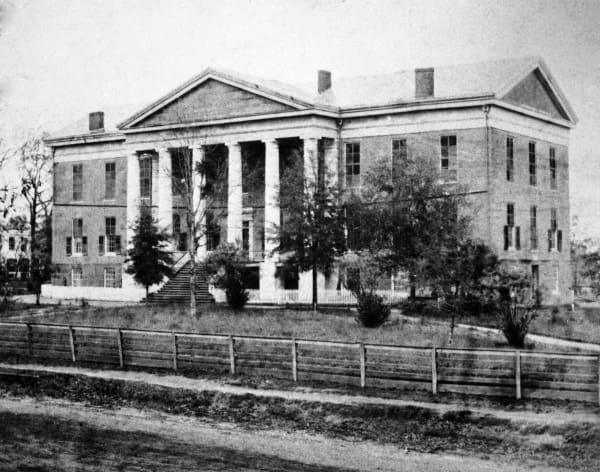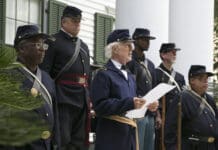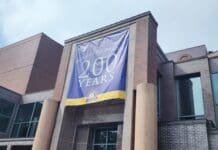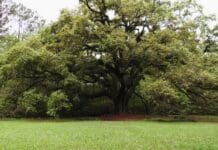January 1, 1934
The Grove catches fire
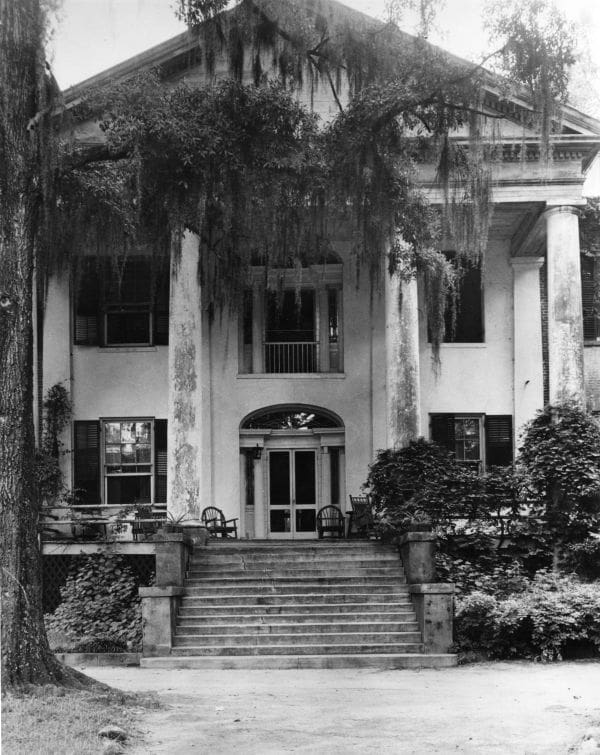

New Year’s Day 1934 might have been a good day for the folks at the Grove, the mansion built by Territorial Governor Richard Keith Call, but the night of the first day of 1934 did not go well. Around 10 pm that evening, a fire broke out on the top floor of the northern section of the building. According to the Daily Democrat (the precursor to the Tallahassee Democrat) a strong wind spread the fire across the roof, which destroyed the building’s entire north addition along with its contents. The fire caused an estimated $6,000 in damage. In 2023 dollars that would equate to more than $107,000.
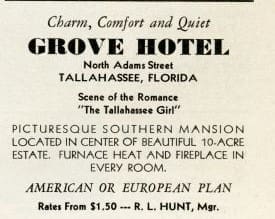

At the time of the fire, Reinette Long Hunt, great-granddaughter of Governor Call, was the owner of the Grove. Hunt, her mother Cora Gamble Long, and Hunt’s brother Richard Call Long were all living at the Grove when the fire broke out in the 110-year-old house. Hunt had been operating the former private home as a hotel. It’s believed that electrical problems caused the fire. Once the repairs were finished Reinette continued to run the Grove Hotel until she died in 1940. Eventually, The Grove was owned by Governor LeRoy Collins and his wife Mary Call Darby Collins, who was another great-grandchild of Richard Keith Call.
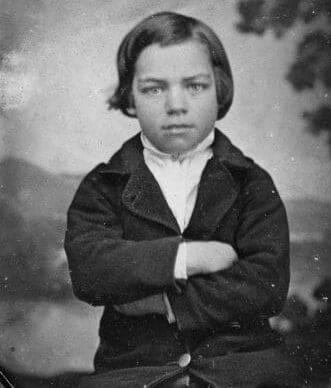

While the home was repaired after the fire, it led to another tragedy for the family. Reinette’s brother, fifty-year-old Richard, was injured while putting out the fire. He stepped on a nail and ended up with blood poisoning. He never had a chance to fully recover. According to his obituary published two and half months later in the Daily Democrat, while still ill from his infection, he caught measles and then developed pneumonia. Richard Call Long died March 19, 1934.
Today the Grove is a museum and run by the State of Florida.
January 1, 1957
Governor orders suspension of Tallahassee buses
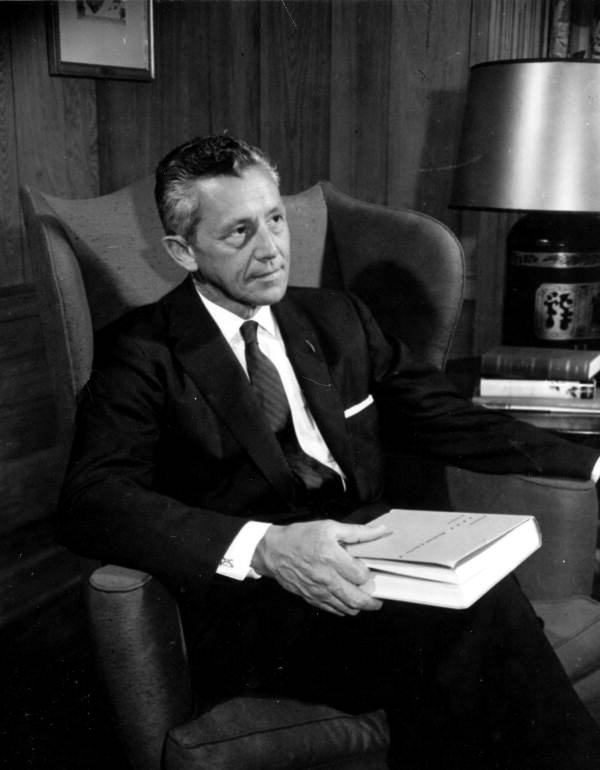

On January 1st, 1957, Florida Governor Leroy Collins used his emergency powers to shut down Tallahassee’s Bus system. For months, the city’s black community had been boycotting the segregated bus lines. While the boycott had officially ended in December, the Inter Civic Council (ICC) had continued to organize protests, including the riding of the busses in a “non-segregated manner.” Threats against the ICC leaders grew. On New Year’s Eve, leaders of the ICC and their families were targeted with violence. Shotgun blasts destroyed Cornelius Speed’s store window. His cousin, Dan Speed, was leading the “Ride the Bus Integrated” campaign for the ICC. Meanwhile, bricks, and then rocks were thrown at the home of ICC leader Reverend C.K. Steele. The rocks broke windows on both the first and second floors. According to Glenda Alice Rabby’s book “The Pain and the Promise,” Steele was afraid that a bomb might follow the rocks, so his wife gathered his young children in the center of the house while he sat up all night with a loaded gun.
Even with the violence and threats targeting them, Steele and the ICC were not happy with the Governor’s suspension of the bus service the next day. In issuing the order, Collins said that he regretted stopping the buses, but also said he enacted the emergency order because the violence had “seriously threatened the lives and well-being of citizens of both races as well as the peace, tranquility, and good order of the community.” While Collins condemned the violence of what he called “extreme, rapid pro-segregationists,” he also blamed black leadership for staging demonstrations and situations to get media coverage. The bus system stayed shut down until February 12th.
January 2, 1957
Cross burned at Bethel Baptist Church in Tallahassee
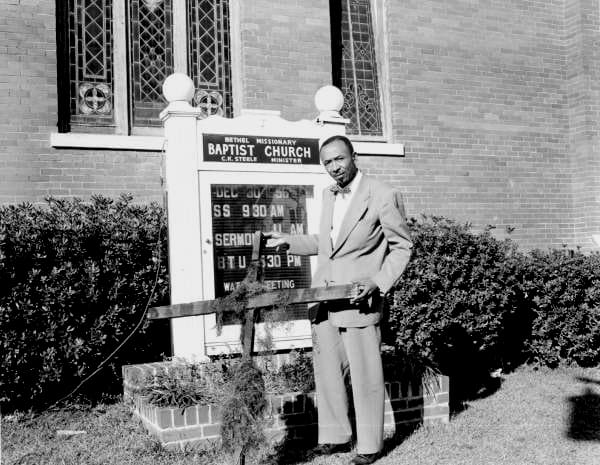

On this day in 1957, a four-foot cross was burned in front of the church run by Tallahassee Civil Rights leader, Reverend C.K. Steele. According to the Tallahassee Democrat, Steele’s 12-year-old son, Clifford, spotted the fire at Bethel Missionary Baptist Church around 9:30 pm. His mother called the police and the family put out the flames. The cross was described as about 4 feet tall and covered in Spanish moss that had been soaked in Kerosene. Photos of Reverend Steele with the cross were taken the next day.
While Police Chief Frank Stoutamire told the Democrat that there was no evidence pointing to the culprits, the Steele family and other black leaders had been targeted by vandalism and violence due to their ongoing efforts to integrate the city’s bus system. On New Year’s Eve rocks had broken several windows at the Steele’s home leading to the Governor suspending bus service in the city. At the time of the fire, Reverend Steele had been at another church attending a meeting of the Inter Civic Council.
January 2, 2000
Music Great Passes Away
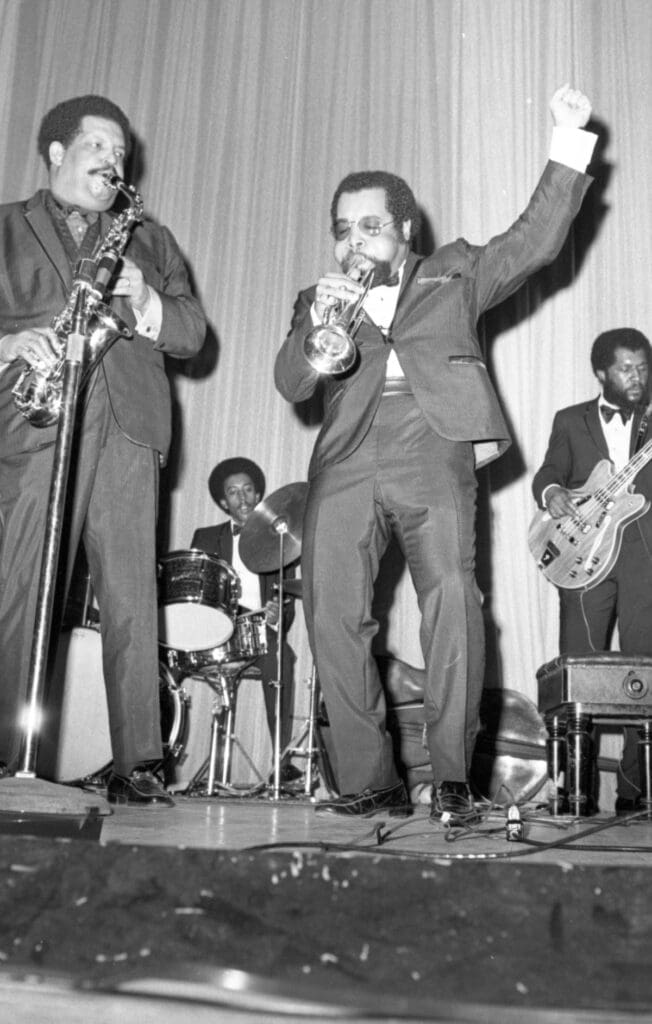

Legendary Jazz musician Nat Adderley died on this day in Lakeland, Florida at the age of 68. Born in Tampa on November 25, 1931, Adderley’s family, including older brother Julian “Cannonball” Adderley, moved to Tallahassee when Nat was very young. His parents worked at Florida A&M College (FAMC). Nat’s father, Julian Adderley Sr. was also a professional musician.
Growing up in a musical family, Nat played the trumpet and the cornet. He not only performed as a teenager in the FAMC Marching band (the precursor to Florida A & M’s Marching 100), but as a young man Nat and his brother performed at venues around Tallahassee with future music icon Ray Charles. Graduating from FAMC in 1951, Nat served in the army for two years.


The Adderley brothers gained fame while performing together in the Cannonball Adderley Quintet. Nat composed many songs, including his well-known “The Work Song.” Adderley once told an interviewer that watching convicts working to pave Pensacola Street in Tallahassee as a child inspired the song he wrote as an adult. He said the call and response of the prisoners were instrumental in creating the song’s unique sound. The Quintet disbanded after Cannonball’s death in 1975, but Nat continued to create and perform. He worked on over 100 albums and was inducted into the Jazz Hall of Fame in 1997.
Nat Adderley died of complications from diabetes in 2000. He is buried near his brother in Tallahassee at the Southside Cemetery.
In January 2023, Tallahassee’s Cascades Park Amphitheater was renamed in honor of the Adderley family.
On December 7, 2023, Florida A&M University’s Board of Trustees voted to rename FAMU’s Institute for Research in Music and Entertainment Industry Studies to honor the Adderley brothers.
January 2, 1981
Red Barber takes to the NPR airwaves
On January 2, 1981, Sports Announcer Red Barber began weekly appearances on National Public Radio’s Morning Edition from his Tallahassee home.
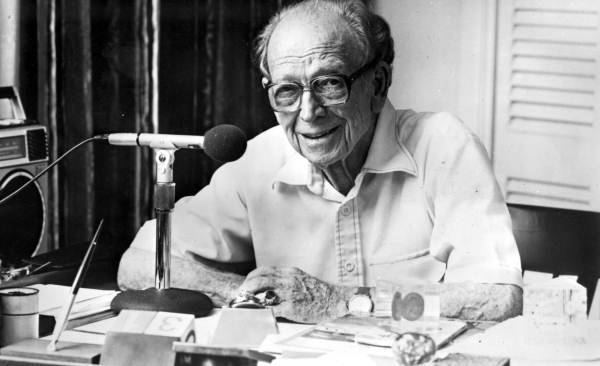

Barber had become famous as a sportscaster during his four-decade career, announcing games for the Cincinnati Reds, Brooklyn Dodgers, and the New York Yankees. He started off with the Reds in 1934, but it was during his time with the Dodgers in the 40s and 50s that his legendary status accelerated.
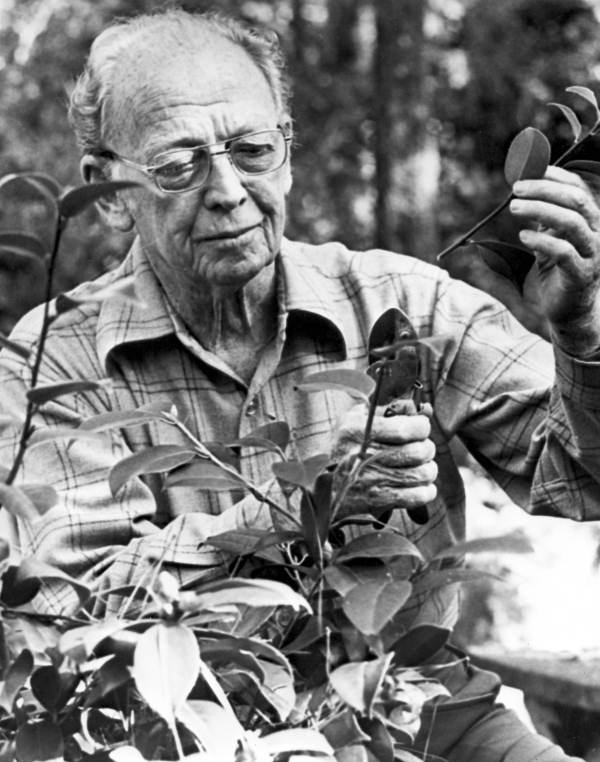

Barber moved to Tallahassee with his wife, Lylah, in 1972. Lylah had gone to school at Florida State College for Women and was familiar with the area. Despite his “retirement,” Barber continued to work. He covered sports in a weekly column in the Tallahassee Democrat and wrote several books, including “1947: When All Hell Broke Loose in Baseball” which covered the time when Jackie Robinson joined the Brooklyn Dodgers.
In 1981, Barber added a new item to his resume through a weekly conversation with Bob Edwards of NPR’s Morning Edition about sports. Each Friday morning, from his home in Waverly Hills, they would talk about current sports topics and other things, including the flowers around Barber’s home. When WFSU Public Media built a new facility in the early 1980’s it was named after Barber. Barber continued the conversations on Morning Edition until he died in 1992 at the age of 84. After Barber passed away, the city created a special tribute garden to him in McCarty Park in Tallahassee’s Chain of Parks). Several camellias from his home were transplanted to the site.
January 3, 1861
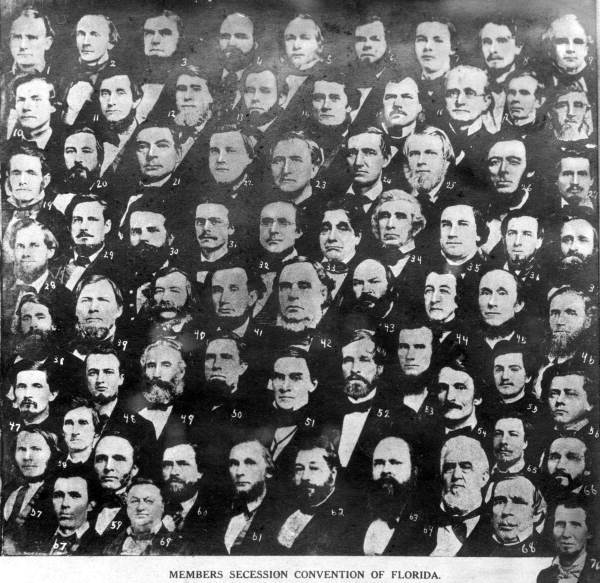

Florida begins the process of leaving the Union
On this day in 1861, Florida delegates met in Tallahassee at the capitol building to begin the process of seceding from the United States of America. Following the election of Abraham Lincoln as President, Florida Governor Madison S. Perry called for a special convention to discuss Florida’s right to withdraw from the Union. The Museum of Florida History and other sources says there were debates inside and outside of the meeting for and against the decision, but those in favor were more numerous. Seven days after the start of the Convention, on January 10, the delegates passed the “Ordinance of Secession” making Florida the third state to secede (South Carolina and Mississippi were first). The vote was 62 to 7. At this point, Florida had only been a state for 15 years.
Learn more about Florida’s history during the Civil War by checking out Episode Three of WFSU’s Florida Footprints Documentary series. The episode is called “The Confederate Road.”
January 3, 1978
First woman is sworn into Florida’s Appellate Court
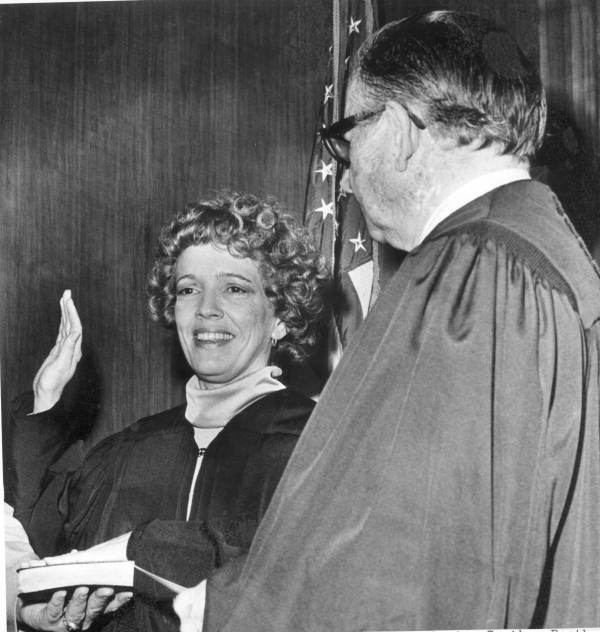

On this day in 1978, Tallahassee’s Anne Cawthon Booth became the first woman to sit on an Florida’s First District Court of Appeal. It was the first time a woman had sat on the appellate court in the state.
Booth had grown up in Tallahassee and graduated from Leon High School and attended the University of Florida for both college and law school. She was a law clerk for Florida Supreme Court Justice Millard Caldwell and later Chief Justice Joseph Boyd. According to her obituary, in in a letter Justice Caldwell wrote Booth during the hiring process, Caldwell asked her why he “should hire a woman as law clerk.” She responded with “I am a hard-to-get-along-with, very short-tempered person. It sounds to me like the only person who would put up with you would be a woman.” Caldwell hired her and she worked for the court for 9 years.
Booth and her husband opened their own law firm where Booth worked until 1978 when Governor Reubin Askew appointed her to the Court of Appeals. At her swearing-in ceremony, the Tallahassee Democrat reported that Booth told the audience, “I will do everything in my power to live up to the trust and confidence shown in me by the nominating commission and the governor.” Booth became Chief Justice of the Court in 1985 and continued on the Court of Appeals until she retired in 2005.
Judge Booth passed away on June 14, 2021 at her Tallahassee home.
January 5, 1965
NFL Player Born in Perry
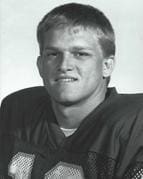

(Florida State University)
American NFL punter Rick Tuten was born on this day in Perry, Florida. Tuten attended Forest High School in Ocala before starting his college career at the University of Miami. After two seasons, he transferred to Florida State University in Tallahassee in 1985 to play the rest of his college career for Legendary Coach Bobby Bowden. Known as “Bootin’” Tuten, the majority of Tuten’s 10-year professional football career was spent with the Seattle Seahawks. Tuten also played for the Eagles, the Buffalo Bills, and the St. Louis Rams. Tuten died unexpectedly at the age of 52 in 2017 while traveling in Costa Rica.
January 6, 1827
Happy Birthday, Jefferson County!
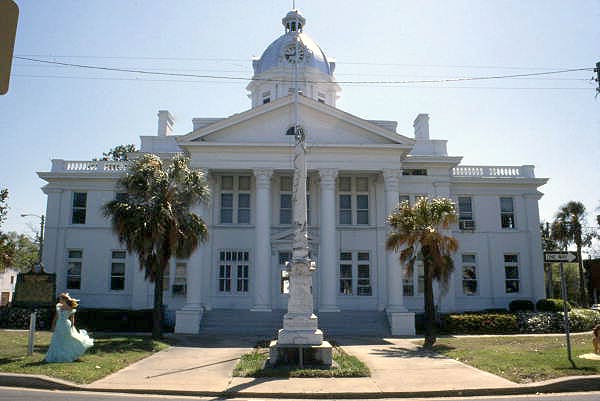

Florida’s Territorial Legislature created Jefferson County on this day in 1827. Originally part of Leon County, the new county was named for former President Thomas Jefferson. Jefferson had died the previous July. Initially, a post office run by John G. Robinson was declared the Jefferson County seat. A more formal town was organized in 1828 and given the name Monticello after Jefferson’s home in Virginia.
January 7, 1957
Segregation without using the word “Segregation”
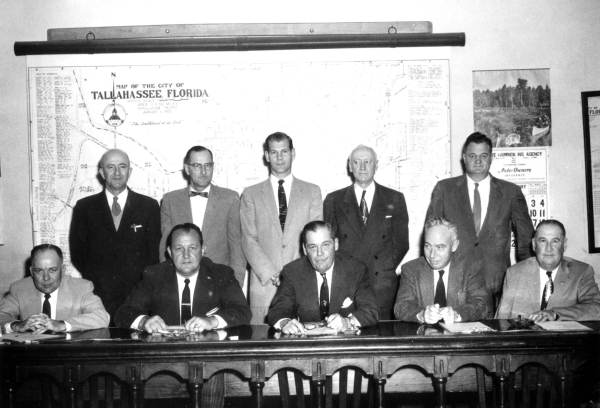

On this day in 1957, Tallahassee City Commissioners voted to remove language from the bus company’s franchise agreement that required them to “make and enforce reasonable rules and regulations providing for the segregation of the human races when more than one race is transported on the same bus.” The decision came after a 7-month boycott of the bus system by Tallahassee’s black community. Just days before the vote, the Governor shut down the bus system after violence toward boycott leaders on New Year’s Eve. A 1956 U.S. Supreme Court decision also played a role in the decision. The court had ruled in Browder v. Gayle that bus segregation was unconstitutional. However, the Tallahassee City Commission had a new plan to continue segregation on the buses without putting it in writing. In that same meeting on January 7th that eliminated the word from the bus agreement, the commission passed an ordinance giving the bus drivers the power to assign people riding the bus to assigned seats. Anyone who had a problem with it could get a refund and get off the bus or face arrest. This essentially allowed the city and the bus company to continue the practice of segregation.


January, 9, 1978
Serial killer Ted Bundy arrives in Tallahassee
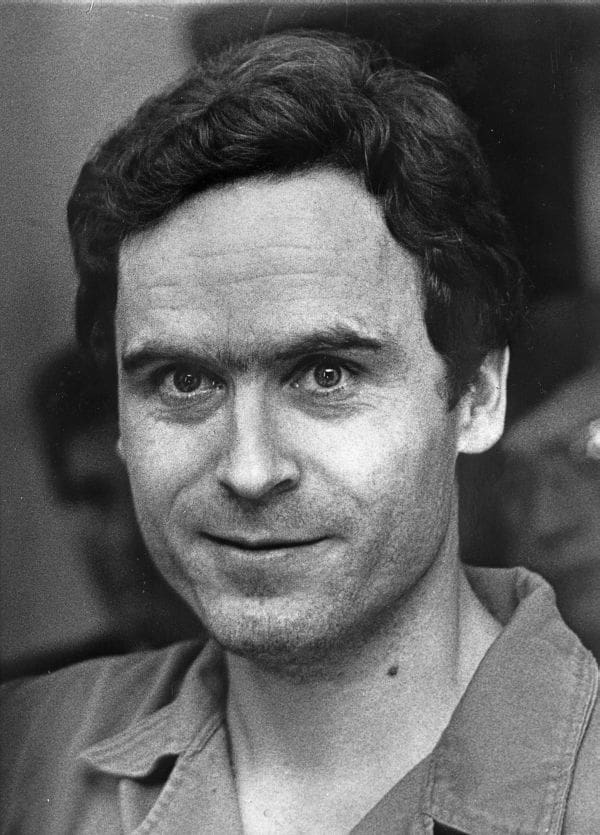

Murderer Ted Bundy arrived in Tallahassee on this day in 1978. Just two weeks before, he had escaped from a jail near Aspen, Colorado where he was awaiting trial. It was Bundy’s second jailbreak. The first time he had been on the run for 6 days before he was recaptured. The second time, Bundy planned his escape better and got much farther. He traveled to Denver, Chicago, Ann Arbor, Atlanta, and finally reached Tallahassee by Trailways bus.
Bundy rented a place at The Oak rooming house on West College Avenue (next to the current Sigma Alpha Epsilon Fraternity) under the fake name Chris Hagen. While he was older than most students at Florida State University, Bundy felt comfortable on college campuses. He spent time at the law library and at college night spots around town. In the early morning of January 15th, Bundy entered into the Chi Omega Sorority house just a few blocks from his rooming house. He attacked four sleeping women using a club, beating them severely. Two were killed. After leaving the sorority house, Bundy broke into another house several blocks away and attacked another woman. She also survived.
January 10, 1861
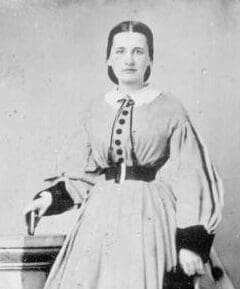

(State Archives of Florida/Walker)
Florida quits the Union
On this day in 1861, Florida’s Secession Convention passed the Ordinance of Secession which declared the state “a sovereign and independent nation” by a vote of 62 to 7. The decision made Florida the 3rd state to resign from the United States, right behind South Carolina and Mississippi.
The one-page Ordinance was signed in a solemn ceremony the next day on the east steps of the Capitol building. In her book, “Through Some Eventful Years”, Tallahassee resident Susan Bradford Eppes shared sections of her teenage diary from that day:
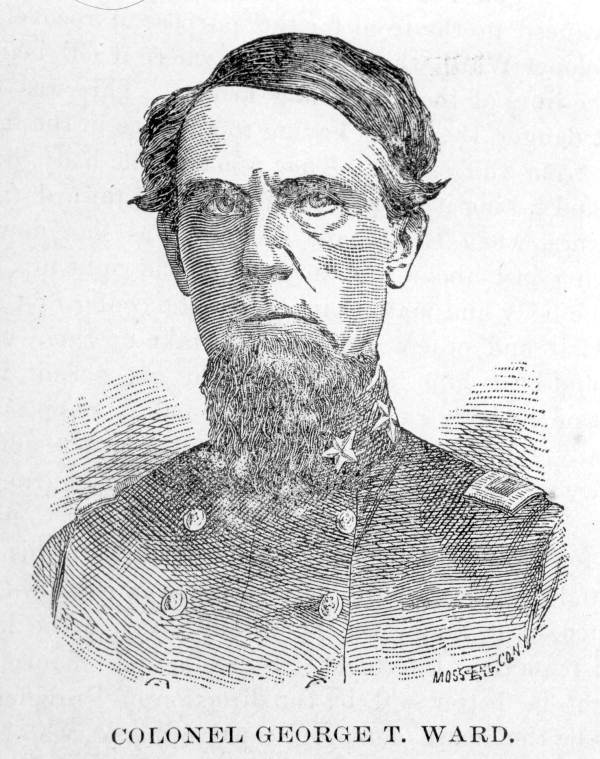

“As the old town clock struck one, the Convention, headed by President McGehee, walked out on the portico. In a few moments, they were grouped about the table on which someone had spread the parchment on which the ordinance of secession was written. It was impossible for me to tell in what order it was signed, the heads were clustered so closely around the table, but presently I heard Col. Ward’s familiar voice. There was a little break in the crowd, and I saw him quite plainly. He dipped his pen in the ink and, holding it aloft he said, in the saddest of tones, ‘When I die I want it inscribed upon my tombstone that I was the last man to give up the ship.’ Then he wrote slowly across the sheet before him, ‘George T. Ward.’“
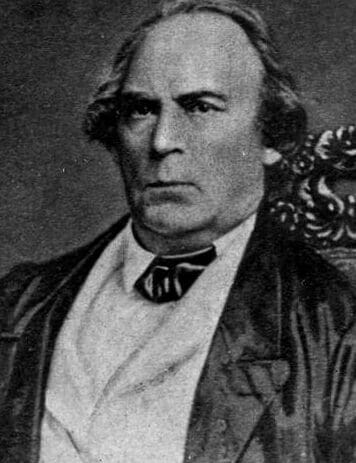

“The stillness could almost be felt. One by one they came forward and after a while, Col. Owens, a Baptist minister, who is lame, came up to sign and in a loud voice he said: ‘Unlike my friend, Colonel Ward, I want it inscribed on MY tombstone that I was the FIRST man to quit the rotten old hulk.’ A very faint applause greeted this, but it died away before it hardly began. This was no time for jesting; it meant too much.’”
Epps said it wasn’t long before the mood changed. She said that when the last name was signed “cheer after cheer rent the air; it was deafening. Our world seemed to have gone wild.” Epps said that former Governor Richard Keith Call, who had opposed the ordinance, had tears “streaming down his face” during the celebration.
By the end of February, the new “independent nation” of Florida officially joined the Confederacy.
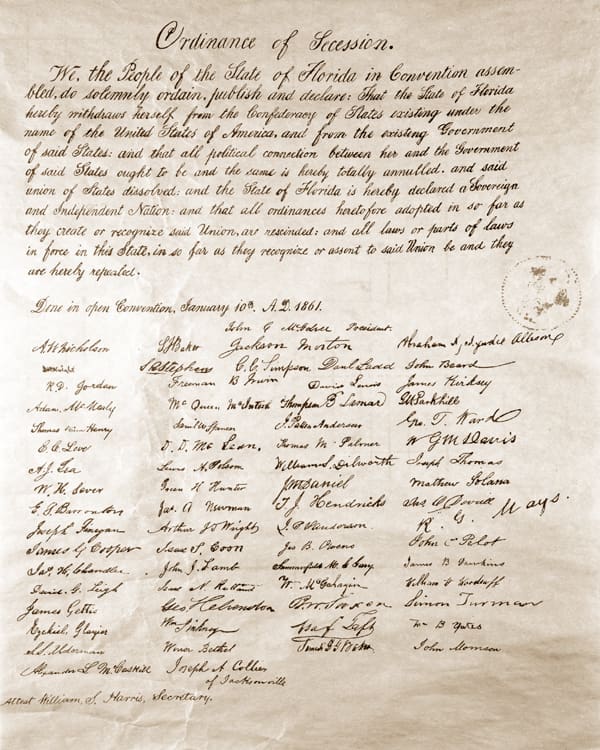

Florida’s Ordinance of Secession:
“We, the People of the State of Florida in Convention assembled, do solemnly ordain, publish and declare: That the State of Florida hereby withdraws herself from the Confederacy of States existing under the name of the United States of America, and from the existing Government of said States; and that all political connection between her and the Government of said States ought to be and the same is hereby totally annulled, and said union of States dissolved; and the State of Florida is hereby declared a Sovereign and Independent Nation; and that all ordinances heretofore adopted in so far as they create or recognize said Union are rescinded; and all laws or parts of laws in force in this State, in so far as they recognize or assent to said Union be and they are hereby repealed. “
Learn more about Florida’s history during the Civil War by checking out Episode Three of WFSU’s Florida Footprints Documentary series. The episode is called “The Confederate Road.”
January 14, 1844
John E. Proctor born on this day
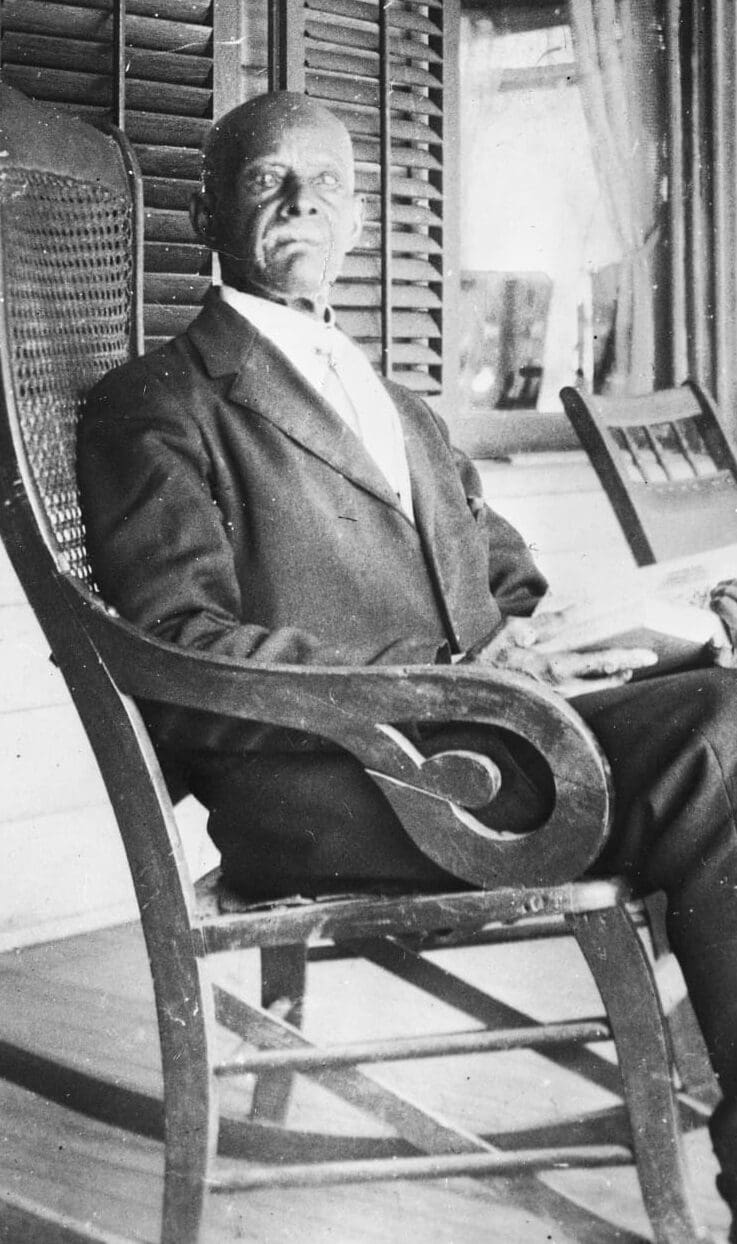

Born in 1844, John E. Proctor became a politician in Tallahassee just a few years after the Emancipation Proclamation freed him from slavery. John was a member of the Florida House of Representatives representing Leon County from 1873 to 1875 and again from 1879 to 1881. He later served in the Florida Senate representing District 8 from 1883 to 1885.
John Proctor was part of a third generation of Tallahassee Proctors whose life not only made a significant mark on the city of Tallahassee but also reflected the changing role of African Americans in the United States from its founding to after the Civil War. Their lives were documented in Lee Warner’s book, “Free Men in an Age of Servitude: Three Generations of a Black Family,”
John’s grandfather, Antonio Proctor, born in the capital of the Dominican Republic, was enslaved as a child and was owned by a British Officer during the American Revolution. Antonio gained his freedom after the war while working for a trading company. Proctor’s work as translator and guide on explorations of the Territory of Florida helped lead to the founding of Tallahassee in 1824.
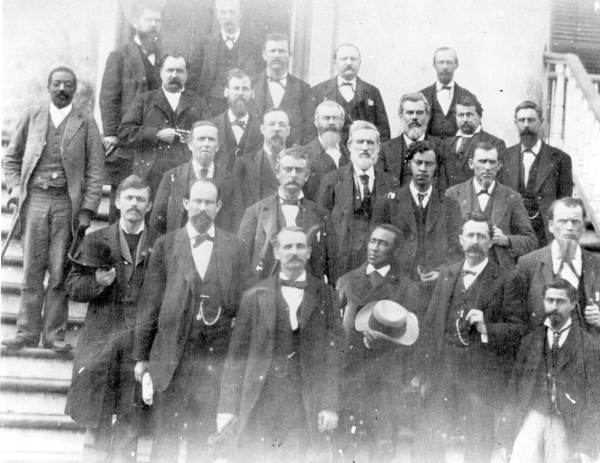

According to Warner’s book, both Antonio and one of his sons, George, settled in Tallahassee between 1829 and 1830. George, a master carpenter, built several homes in the new community. Several are still standing today, including the Knott House and the Rutgers House.
George was one of the few free black men in the Tallahassee community at the time. He had to purchase his wife so his children could also be born free. However, a poor economy and rising debts for a family with 6 children grew. In 1949, George left his family behind to go to California during the Gold Rush, hoping to pay off his debts. George did not succeed and never returned to Tallahassee. His wife and his children, including John, were enslaved to pay off George’s debts in 1854. John was 10 years old.
John was 21 when the war ended. After he gained his freedom, John worked as a waiter and eventually became a teacher before turning his attention to politics. Proctor died December 1944 just a few months shy of his 101st birthday.
January 14, 1941
Happy Birthday, Faye Dunaway!
Oscar-winning Actress Faye Dunaway was born on January 14, 1941, in the town of Bascom, Florida. Located in the northern part of Jackson County, Dorothy Faye Dunaway didn’t spend much time in the small town as a child. Her father was in the military and the family moved around.
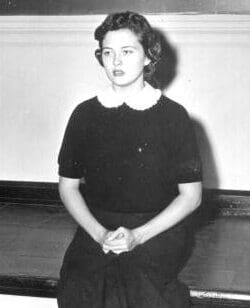

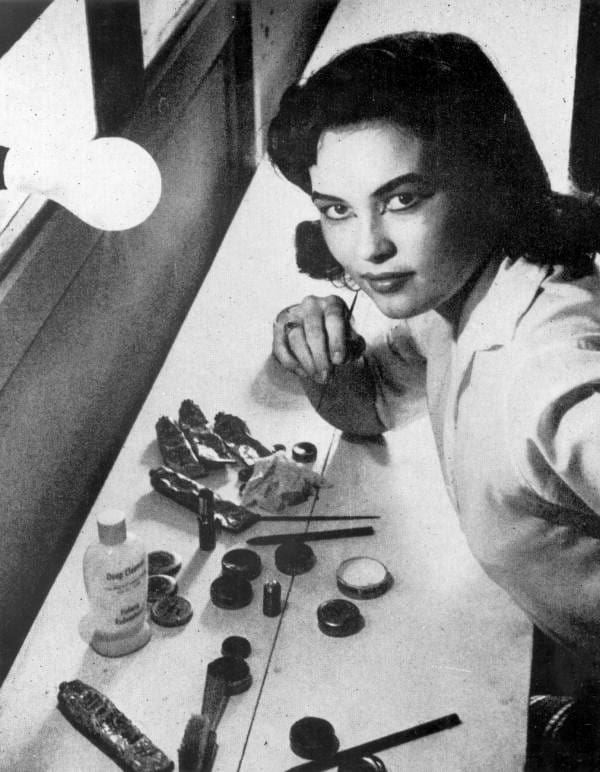

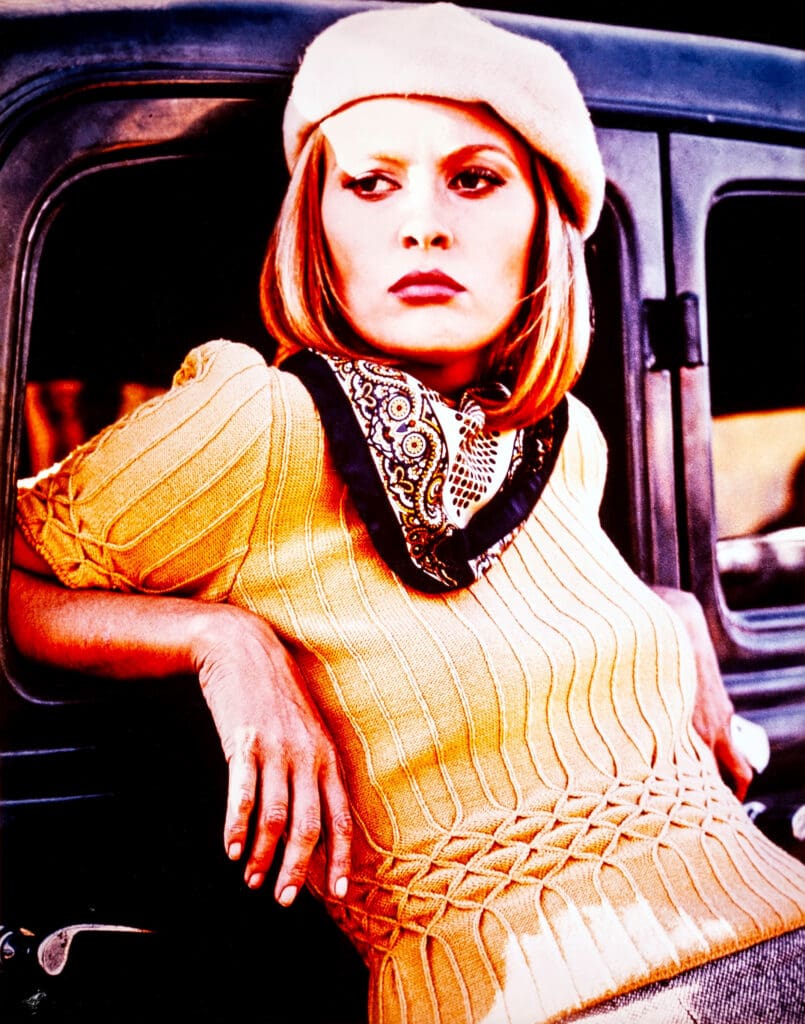

In 1955, Faye began her sophomore year at Leon High School in Tallahassee. Her mother had remarried and the family lived on Dellwood Drive off of North Monroe Street. Dunaway crammed a lot into her three years at Leon. She performed lead roles in the Junior and Senior class plays, was a cheerleader, and a member of the National Honor Society. In May 1958, right before graduation, Faye lost the contest for the Tallahassee May Day Queen by 6 votes.
After graduating from Leon, Dunaway spent her first year at Florida State University majoring in speech before transferring to the University of Florida and then later to Boston College where she majored in drama. Dunaway’s break-out acting role was in the movie “Bonnie & Clyde.” She won an Oscar for Best Actress for her performance in the movie “Network” in 1977.
January 15, 1978
Bundy attacks women at FSU’s Chi Omega Sorority House
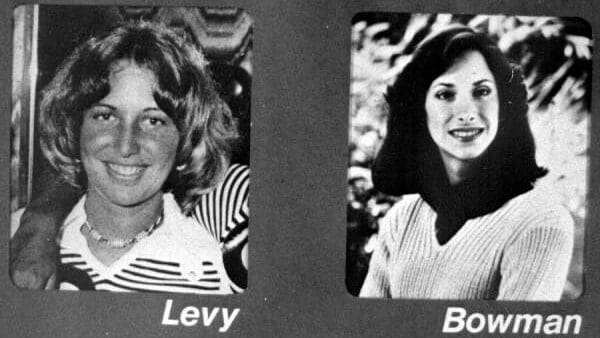

(State Archives of Florida)
Just 6 days after arriving in Tallahassee, escaped murderer Theodore “Ted” Bundy entered Chi Omega Sorority house on Florida State University’s campus around 3 a.m. A faulty lock on the back door allowed him access to the building. Bundy snuck into the rooms of 4 sleeping women and using a piece of wood like a club, he beat them so severely he made it impossible for them to call out. He mutilated and assaulted the 4 women, killing two: Margaret Bowman and Lisa Levy. As he left the house, another Chi Omega sister returning home in the early morning hours saw Bundy leave the sorority house. At his trial later, she said she made eye contact with Bundy as he left.
Bundy’s night of violence wasn’t over. After the Sorority house, he then headed a few blocks away and broke into the apartment of another sleeping woman. He violently attacked her as well, but she also survived.
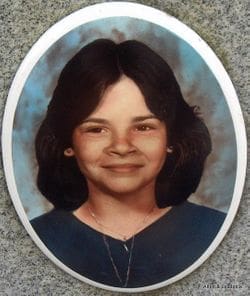

After the attacks, Bundy continued his stay in Tallahassee for almost a month, speculating with others in the rooming house about who could have committed the crimes. On February 8th, Bundy stole a van and drove to Lake City where he kidnapped, raped, and killed 12-year-old Kimberly Dianne Leach. Her mutilated body wasn’t found for almost two months.
Bundy finally left Tallahassee on February 12 heading toward Pensacola. He was stopped by a police officer there for driving another stolen vehicle. Bundy attacked the officer and was arrested. He was eventually charged, tried, and convicted in the murders and attacks on the Chi Omega women and the Lake City girl. The State of Florida Executed Ted Bundy in 1989. By then, he had confessed to 30 murders, but investigators are not sure exactly how many women Bundy killed in his lifetime.
The first segment in episode 7 of the WFSU Florida Footprints documentary looks at Bundy’s murders in Tallahassee and how it changed the community.
January 19, 1957
Ordinance regarding assigned seating on buses is tested
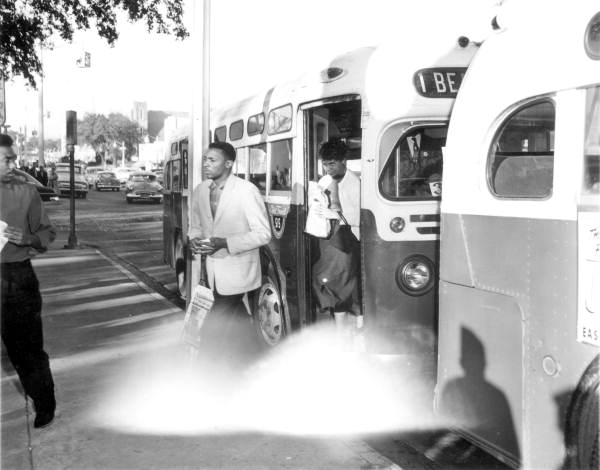

Six students tested a new Tallahassee city ordinance that was intended to perpetuate segregation on city buses without officially using the word “segregation.” The City Commission had passed Ordinance 741 on January 7th. It allowed bus drivers to assign passengers to specific seats. According to Glenda Alice Rabby’s book “The Pain and the Promise,” six college students (three black and three white) decided to challenge the rule.
Upon getting on the bus that day, driver Emory Elkin assigned the three black Florida A&M students (Leonard Speed, John Herndon, and Harold Owens) to sit together at the back of the bus and the three white FSU students (Joe Spatna, Jon Folsom, and James Kennedy) to sit together at the front. During the ride three of the students (Spatna, Speed, and Herndon) switched places so they were sitting in interracial pairings. When the students refused to return to their assigned seats, the police were called. Speed, Spatna, and Herndon were arrested and the other three were ordered to appear as material witnesses.
The three were found guilty and sentenced to 60 days in jail and given a $500 fine.
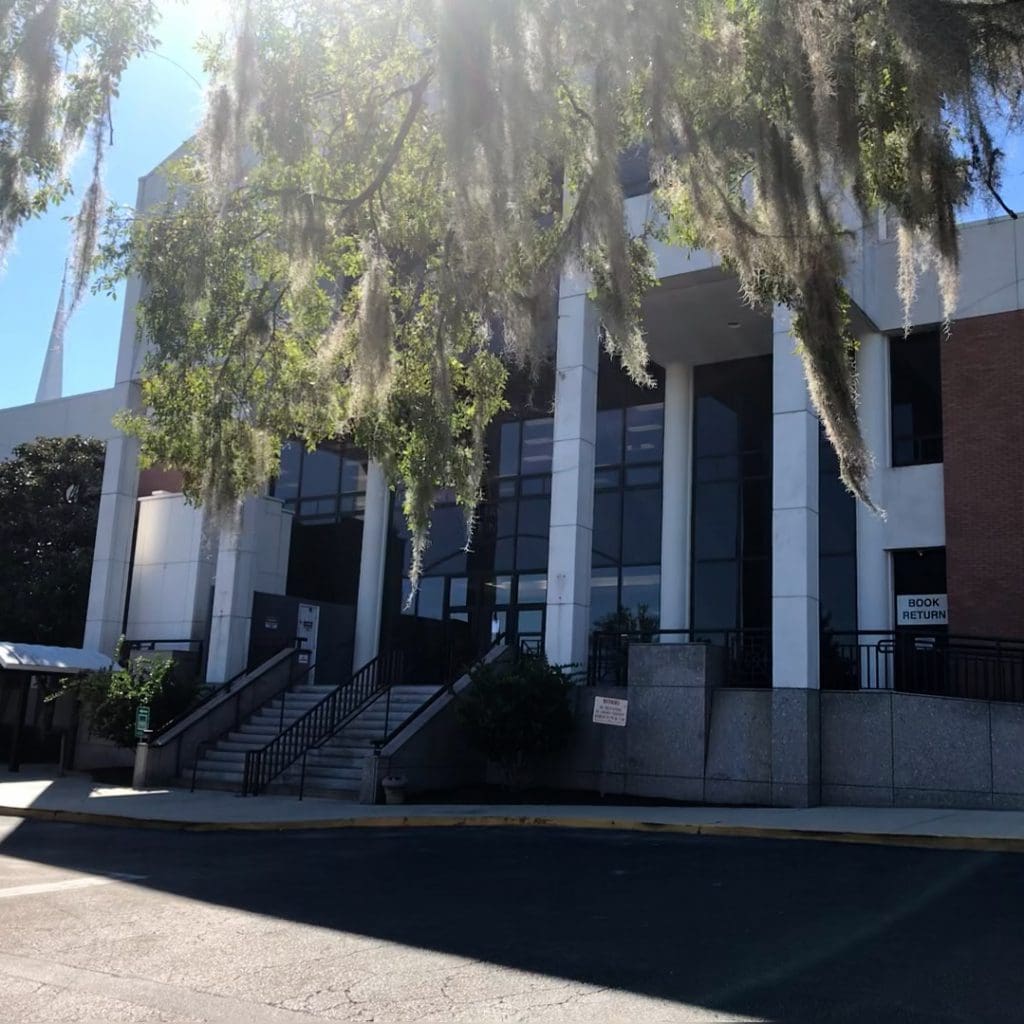

January 20, 1991
The Leon County Public Library opened their new building on Park Avenue on January 20, 1991. The 10.5-million-dollar building was the first permanent home for the county’s public library in 35 years. It was first housed at the Columns in 1956, then the Elks Club on Monroe Street, and eventually an old store at the Northwood Mall.
The construction of the new library had begun in March of 1989. Two years later after the new library opened to the public, the library was renamed the LeRoy Collins Leon County Public Library after the late Governor LeRoy Collins.
January 21, 1801
Tallahassee’s “Prince” is born
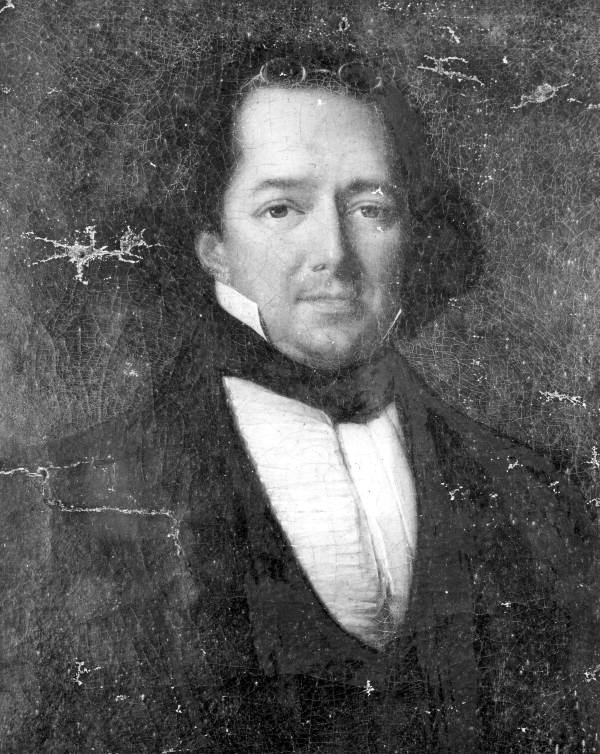

On this day in 1801, future Tallahassean Achille Murat was born in Paris, France to the sister of Napoleon Bonapart. Bonapart, who was crowned Emperor of France in 1804 made his sister and brother-in-law the Queen and King of Naples, which in turn made Achille a crown prince.
The royal title was short-lived for Murat (whose full name was Charles Louis Napoleon Achille Murat.) When Napoleon was exiled in 1815, Murat’s father was also dethroned and then executed, and the Murat family left the country. Eventually, Murat ended up in the United States. While touring the country he met future Territorial Governor of Florida, Richard Call in Washington, D.C. Having talked about the possibilities existing in the newly acquired territory, Murat moved to St. Augustine and then later Tallahassee.
Murat married Catherine Willis Gray, the great-grandniece of George Washington, and became a naturalized citizen. He was Postmaster of Tallahassee for many years. The Murats had a plantation in Jefferson County called Lipona which was an anagram of Napoli (Naples). The Murats temporarily moved to Louisiana but soon returned. Debts forced Murat to lose the Lipona plantation in 1939 and the couple moved to another plantation called Econchatti. Murat died April 15, 1847. He is buried next to his wife a St. John’s Episcopal Church Cemetery.
January 21, 1949
WFSU Radio goes on air for the first time.
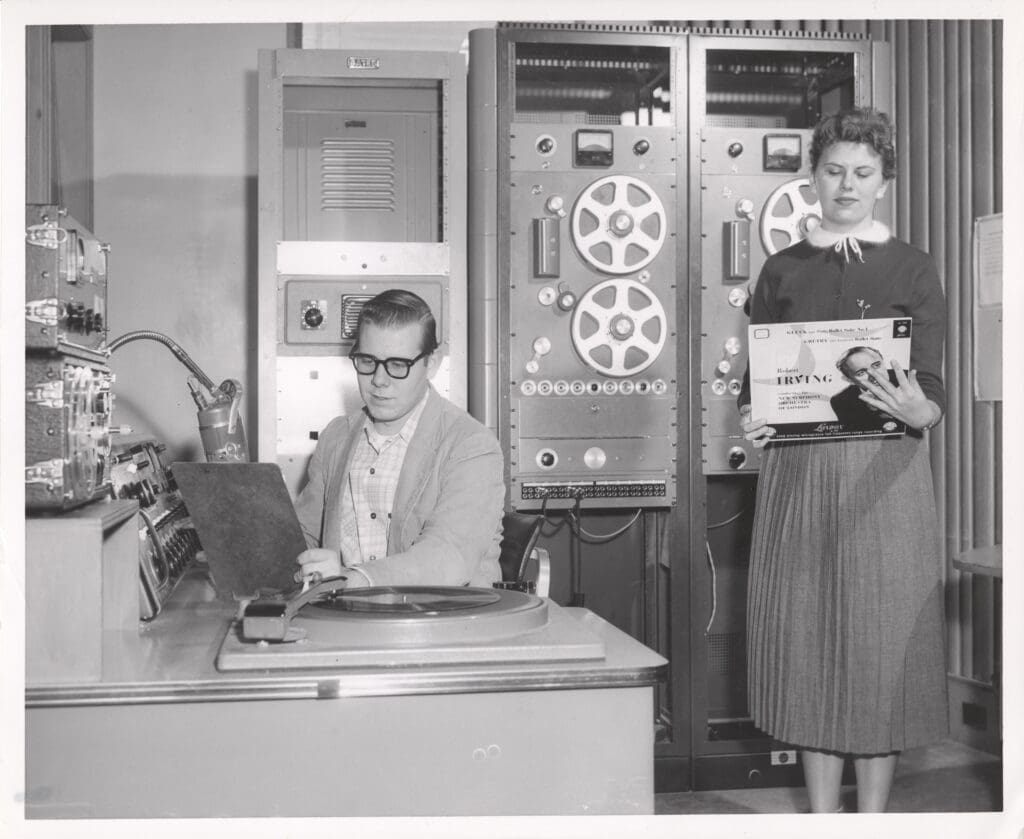

The WFSU Public Media that you know today got its first moment over the air with a radio station in 1949. Initially heard on 660 AM only on the campus of Florida State University, the station had an interesting creation story.
In the early days of FSU, the male and female students still had separate student governments stemming from the days when Florida State College for Women was still single sex institution. Men initially attending FSCW as part of the Tallahassee Branch of the University of Florida before the legislature created the co-educational FSU. In the spring of 1948, Florida State University’s Men’s Senate was considering how to spend $2700 money left in the recreation budget from TBUF. The decision came down to a roller-skating rink or a student radio station. At a Forum in April, both sides were presented and the radio station won in a vote of 49 to 26. The following month it was put to a vote with all the male students on FSU’s campus. 439 voted for the radio station, 106 for the skating rink. 72 didn’t want either.
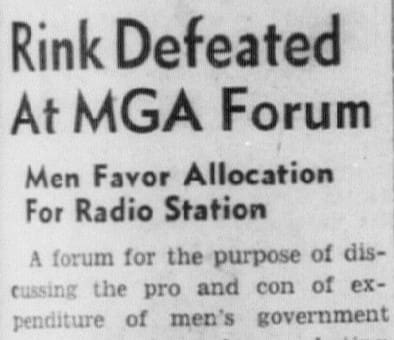

The rink defeated, and station decided upon, it took several months for the station to be built. Once it was on the air, WFSU 660 AM grew quickly in popularity on campus. Unfortunately, it was temporarily shut down in 1953 when the signal unintentionally reached beyond the edges of the campus. With the blessing of the Federal Communications Commission, the station relaunched on 91.5 FM in 1954.
In 1990, WFSU FM moved to 88.9 FM. The original radio channel, 91.5 FM, was rebranded WFSQ and became an all-music format station.
January 22, 1972
NFL Defensive End born in Tallahassee on this day
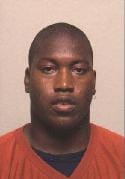

NFL player Toddrick McIntosh was born in Tallahassee on January 22, 1972. He went to high school in Texas, but returned to Florida’s capital to play for Bobby Bowden and the Florida State Seminoles. McIntosh played a variety of defensive positions throughout his college career. In 1993, his last year at FSU, he started as left defensive tackle and helped the team win their first national championship in the Orange Bowl against Nebraska.
McIntosh left FSU after that season for the NFL. He was drafted to the Dallas Cowboys in the seventh round. Throughout his three-year NFL career McIntosh played with the Cowboys, Buccaneers, Saints, Packers, and Vikings.
Toddrick McIntosh was part of a class action lawsuit with thousands of other former NFL players saying they were not provided information about football-related brain injuries. In June of 2014, Mcintosh told the CBS station in Miami about his own health issues. “I notice sometimes when I walk, my equilibrium’s off, my balance is off, or I have a headache. For years we thought that was part of the game. Coming to find out this has something to do with concussions in the NFL.” A one-billion-dollar settlement in the case was reached and approved in 2017.
McIntosh died in September 2014 following a stroke. He was 42 years old.
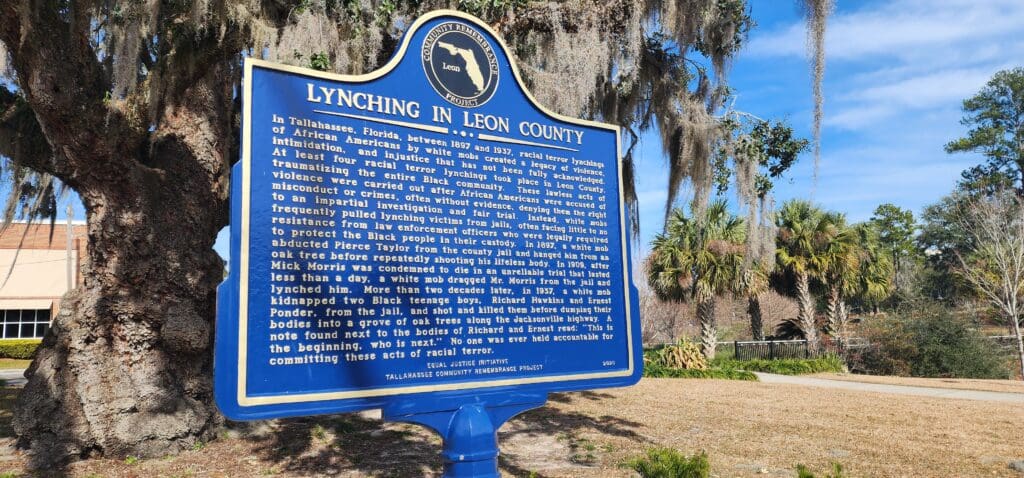

January 23, 1897
First recorded lynching in Tallahassee takes place
Pierce Taylor was killed by a mob on this day in 1897 in what a newspaper called the first lynching in Leon County. According to the January 25, 1897 article in the Los Angeles Herald. Taylor had been arrested after an attempted assault on a woman from the community. It went on to say that a mob took the black man from the jail and hung him from “a tree in the jail yard.” The Equal Justice Initiative also reported on their website that Taylor’s body was then shot multiple times while hanging from the tree.
On July 17, 2021, the EJI dedicated a historical marker at Tallahassee’s Cascades Park near where the jail once stood. It was dedicated to Taylor and three other men who were lynched in the county In addition to Taylor’s lynching in 1897, Mick Morris was lynched in 1909, and in 1937 a mob kidnapped Richard Hawkins and Ernest Ponder from the local jail, shot them, and left their bodies “in a grove of oak trees along a Jacksonville highway.”
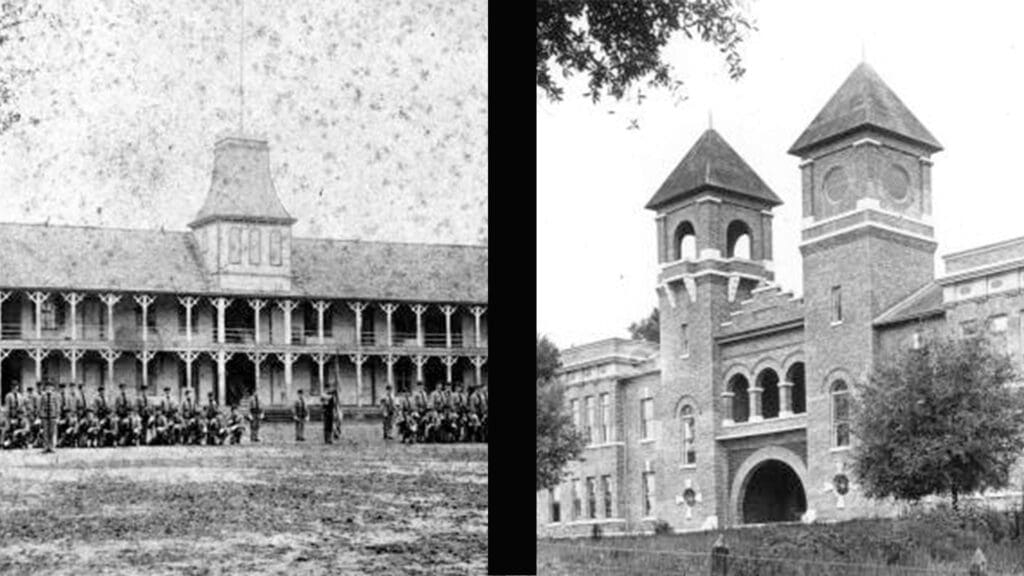

January 24, 1851
The Roots of Higher Education in Florida are Formed
On January 24, 1851, Florida’s State Legislature passed an Act that created the first two state-run institutes of learning. They wanted the schools to teach men and women to become teachers, work in mechanical fields, agriculture, etc. One school would be on the East Side of the Suwannee River, and one would be to the West of the River. The West Seminary eventually became Florida State University in Tallahassee, and the East Seminary eventually became the University of Florida in Gainesville.
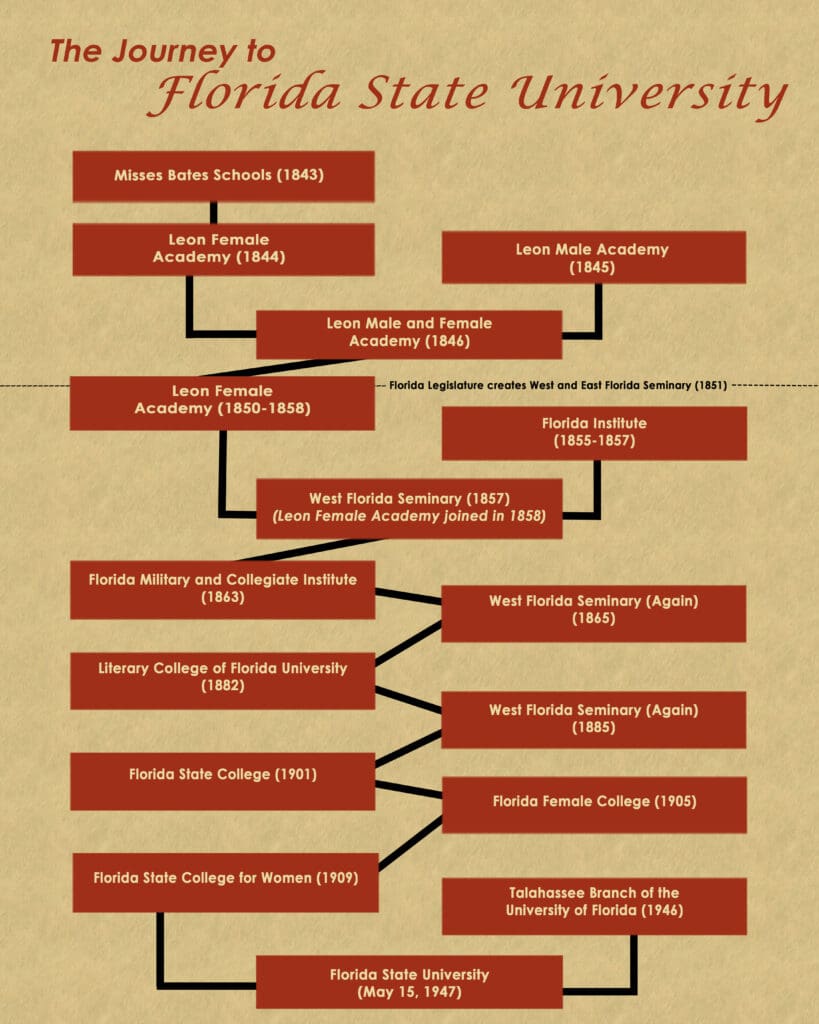

January 24, 1989
Serial Killer Ted Bundy executed
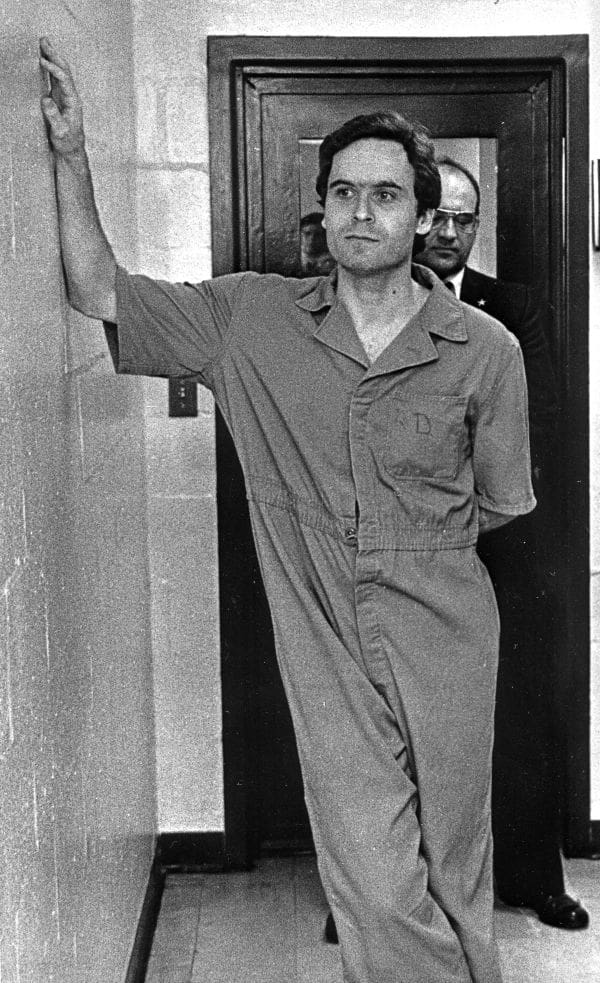

More than a decade after serial killer Theodore “Ted” Bundy committed several gruesome murders in the Tallassee and Lake City area, he was executed by the state of Florida.
Before his death, Bundy had confessed to 30 murders, but his Florida execution stemmed from the single murder of a 12-year-old girl in Lake City on February 8, 1978. He had kidnapped junior high school student Kimberly Dianne Leach, then raped and killed her. It was almost two months before her mutilated body was found.
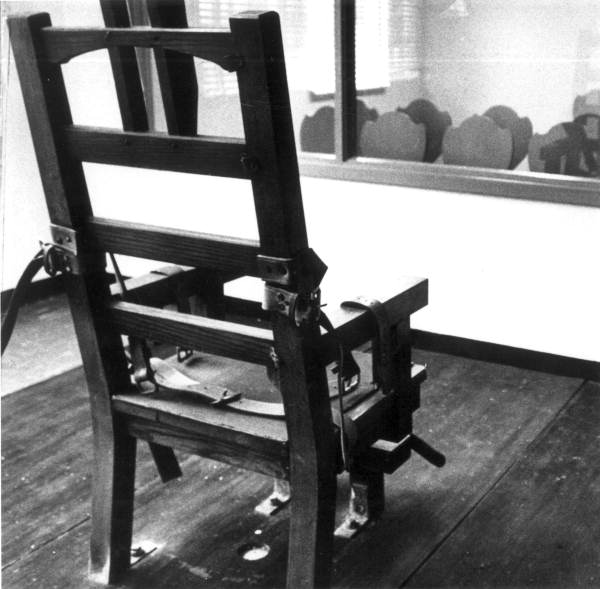

Just a few weeks before Leach’s murder, Bundy had arrived in Tallahassee after escaping from a Colorado jail while awaiting trial on other murder charges. It was his second escape from custody within the year. In this escape, Bundy made it to Tallahassee where he blended into the Florida State University campus. Early in the morning on January 15, Bundy entered the Chi Omega Sorority House at FSU. Beating and assaulting four sleeping women in the house, he killed two. He then entered another apartment a few blocks away and attacked another woman. The horrific attacks rocked Tallahassee.
Bundy stayed in the area for almost a month before heading toward Pensacola when he was stopped by officers for driving a stolen car and then resisted arrest. A judge ordered Bundy’s trial on the sorority murder charges to be moved from Tallahassee and down to Miami. It became one of the first trials televised nationally. He was found guilty and given the death penalty. Several months later he was tried and convicted for the Lake City murder.
The appeals process took several years and Bundy attempted to delay his execution by periodically providing information about many of his victims and the crimes he committed against him. But in 1989 his appeals ran out and he was executed in Florida’s electric chair. Outside the facility, crowds of people waited for the news that the death penalty had been carried out and they cheered the news of his death.
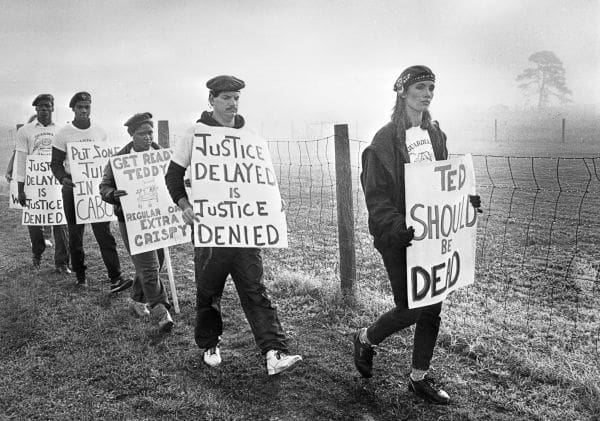

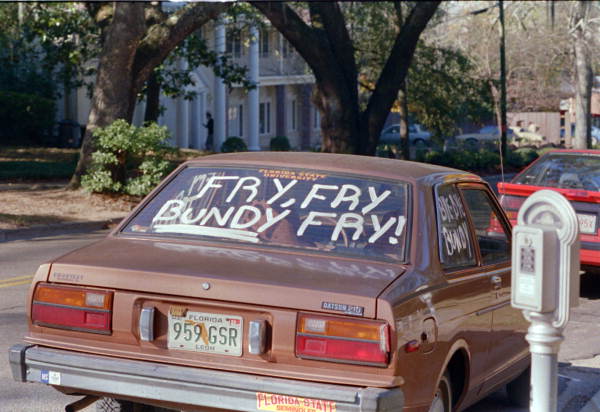

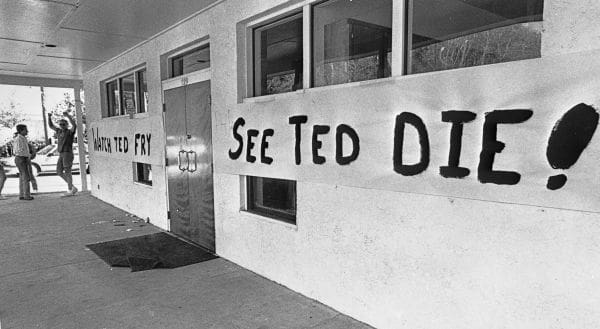

January 26, 1838
Happy Birthday, Calhoun County!
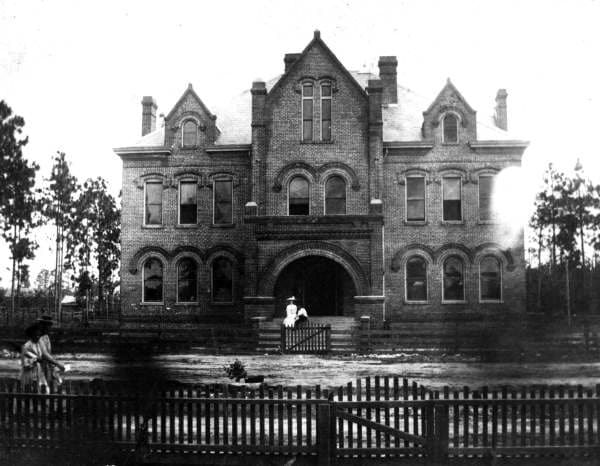

Florida’s Territorial legislature created Calhoun County on this day in 1838 out of parts from Franklin, Jackson, and Washington counties. Later, Calhoun county’s board changed when Bay and Gulf counties were created in 1913 and 1925 respectively.
According to the Calhoun County Chamber of Commerce website, the county was created to establish St. Joseph (the county seat) “as a commercial competitor to Apalachicola.” By 1844 yellow fever and hurricanes had ravaged St. Joseph. The people of the town abandoned the city. Blountstown is the current County seat and largest city in the county.
Calhoun County was named after former U.S. Vice President John C. Calhoun. Calhoun had served as VP under Presidents Andrew Jackson and John Quincy Adams. When the United States gained Florida as a territory, Calhoun had been serving as the U.S. Secretary of War. At the time of the creation of the county, he was a U.S. Senator from South Carolina.
January 31, 1919
The baseball and civil rights legend is born in Cairo, GA
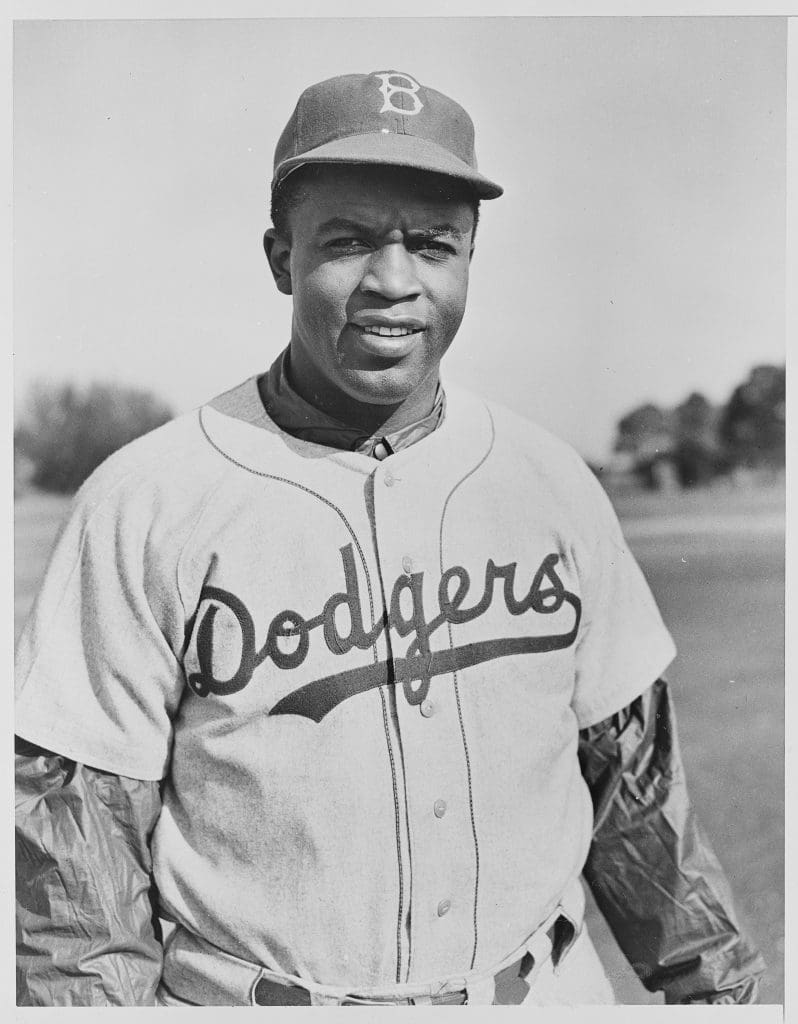

(U.S. Department of State)
On this day in 1919, Jack Roosevelt Robinson was born in Cairo, Georgia. Called Jackie, he didn’t spend much time in the small town north of the Florida state line. Robinson’s mother and four older siblings moved to Pasadena, California a year later.
Robinson was a tremendous athlete and played multiple sports growing up in the West Coast state. After college and serving in World War II, Robinson wanted to play Major League baseball. However, at the time, baseball was segregated. Robinson ended up playing for the “Negro Leagues.” At the same time, the General Manager of the Major League Brooklyn Dodgers, Branch Rickey, was looking for black players to help him integrate the all-white team and eventually all of baseball.
Rickey approached Robinson and in 1946, Robinson began playing in the minor leagues for Montreal Royals, a farm team for the Dodgers. On April 15, 1947, Robinson broke the color barrier on a national level by playing his first game for the Dodgers. Facing opposition from much of his own team and many baseball fans, Robinson handled racism and a baseball in such a way that not only is the sport integrated today because of him, but he is recognized as one of baseball’s greatest players.
Robinson died on October 24, 1972.
Learn more about the life of Jackie Robinson in the documentary about his life by Ken Burns. WFSU and PBS Passport members can watch it here.
History is a work in progress, just like this page…
These are just some of the interesting facts about the history of our community. More moments, events, and people will be added to these memories as time goes on. The WFSU Local Routes team will continue to research, write, and add other historic moments to this month as time goes on. Follow us on Facebook and Instagram for more new-to-you facts about the history of Tallahassee as well as our other north Florida and south Georgia communities. You can also share local historic moments you’d like to see included in our list. Email localroutes@wfsu.org.
Suzanne Smith is Executive Producer for Television at WFSU Public Media. She oversees the production of local programs at WFSU, is host of WFSU Local Routes, and a regular content contributor.
Suzanne’s love for PBS began early with programs like Sesame Street and Mister Rogers’ Neighborhood and continues to this day. She earned a Bachelor of Journalism degree from the University of Missouri with minors in political science and history. She also received a Master of Arts in Mass Communication from the University of Florida.
Suzanne spent many years working in commercial news as Producer and Executive Producer in cities throughout the country before coming to WFSU in 2003. She is a past chair of the National Educational Telecommunications Association’s Content Peer Learning Community and a member of Public Media Women in Leadership organization.
In her free time, Suzanne enjoys spending time with family, reading, watching television, and exploring our community.

